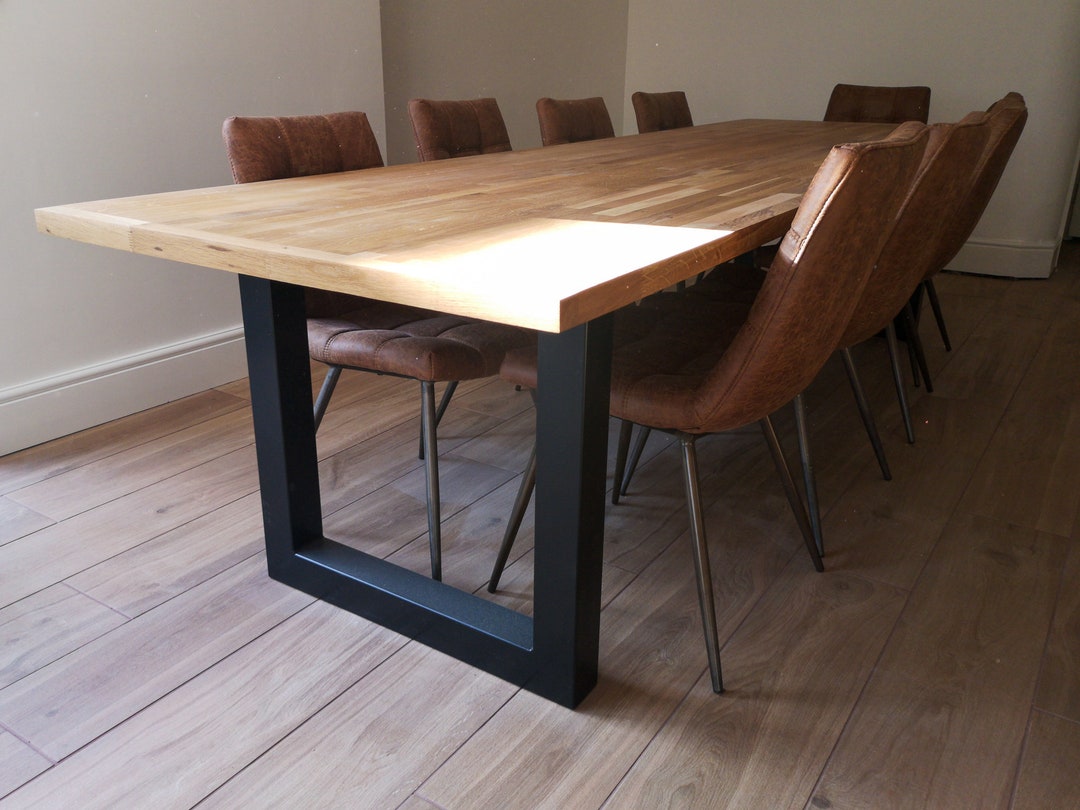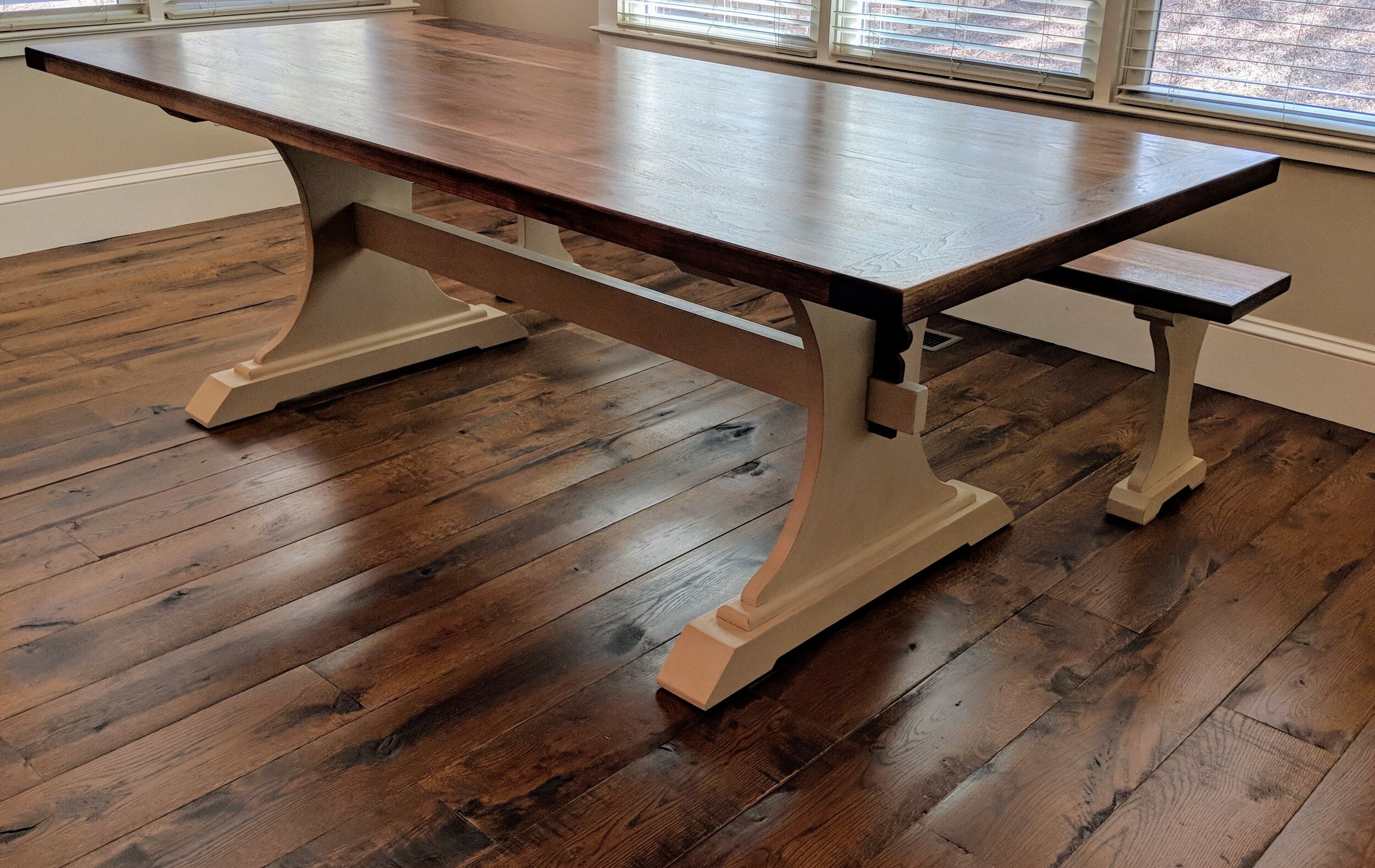How Dining Room Table Legs Can Change the Entire Aesthetic of Your Room
How Dining Room Table Legs Can Change the Entire Aesthetic of Your Room
Blog Article
From Conventional to Modern: Locate the Suitable Eating Area Table Legs for Your Style
The choice of dining-room table legs plays an essential function in specifying the general character of your space, connecting the void in between conventional craftsmanship and modern looks. While classic layouts such as cabriole and transformed legs stimulate a feeling of timeless class, contemporary styles like hairpin and geometric alternatives offer an opportunity for striking visual interest. Assessing the right balance between these designs calls for a nuanced understanding of your existing design and personal taste. As you consider these aspects, the question continues to be: how can you seamlessly incorporate these varied leg designs to develop a harmonious eating experience?
Comprehending Table Leg Styles
The range of eating area table leg styles can substantially affect both the aesthetics and functionality of the space. Each leg style contributes distinct visual elements and useful features, providing to varied style preferences and usage requirements. Understanding these designs is essential for selecting the ideal eating table that straightens with your general interior design vision.
For instance, conical legs use a tidy, timeless look that can enhance a room's beauty, while stand bases offer stability and take full advantage of legroom, making them suitable for smaller sized areas. Barrette legs, a trademark of mid-century contemporary design, present a commercial style, enabling a ventilated, open feel. Trestle legs evoke rustic appeal, offering durable support and a feeling of timelessness.
Furthermore, the choice of products plays a substantial duty. Wooden legs can bring warmth and appearance, whereas metal choices typically convey a streamlined, contemporary ambiance. Eventually, understanding table leg styles is necessary for developing a cohesive dining location that shows individual style while making certain practicality and convenience. By thoughtfully thinking about these elements, you can improve both the visual and useful appeal of your eating space.
Traditional Table Leg Options
When selecting dining-room table legs, typical options commonly personify timeless style and workmanship. These designs reflect a rich heritage and a commitment to high quality, making them ideal for those who appreciate traditional visual appeals.
One of one of the most legendary traditional leg styles is the cabriole leg, characterized by its graceful rounded form. This design typically features attractive makings and is most generally located in Queen Anne and Chippendale furnishings. An additional popular option is the turned leg, which boasts a collection of smooth, rounded forms that offer a classic look while maintaining stability.
Furthermore, the straight leg, while straightforward, offers a unadorned and sturdy framework that can blend seamlessly with a selection of tabletop designs. For those attracted to ornate describing, claw-and-ball feet legs stimulate a feeling of magnificence and can work as a spectacular centerpiece in any type of eating area.
Finally, pedestal bases, although not strictly legs, provide a different typical option that enables ample legroom and can be wonderfully carved. Each of these traditional leg designs adds to the total setting of a dining-room, weding feature with aesthetic appeal.

Modern Table Leg Designs
Modern table leg styles provide a varied variety of styles that emphasize ingenious products and clean lines. These designs usually prioritize capability while serving as striking prime focus within a dining space. Minimal visual appeals are widespread, with legs crafted from materials such as steel, glass, and engineered wood, which add to a modern and airy feeling.
One preferred design is the hairpin leg, defined by its slender, tapered structure that gives stability without frustrating the table top (dining room table legs). This design is frequently have a peek at these guys found in mid-century contemporary furnishings and can effortlessly match numerous dining table shapes. An additional fad is using geometric forms, where legs may tackle asymmetrical or angular types, including aesthetic interest and a touch of creativity

Mixing Styles for Distinct Areas
Commonly, property owners look for to develop special eating areas that reflect their individual design by blending various layout components. This technique permits the unification of varied aesthetic appeals, resulting in an unified yet distinct setting. Pairing a rustic wooden table with smooth, contemporary steel legs can produce an appealing contrast that raises the room's general charm.
Additionally, incorporating vintage table legs with modern table tops can evoke a feeling of background while maintaining a contemporary perceptiveness. Such combinations not just showcase specific taste but also motivate creativity, enabling homeowners to curate an area that feels both personal and inviting.
Color plays a crucial duty in this blending process; picking table legs that complement or contrast with the existing color design can enhance visual rate of interest. Whitewashed legs can soften the boldness of a dark table surface area, creating a well balanced visual.
Tips for Choosing the Right Legs
Selecting the right table legs is important for attaining both performance and aesthetic appeal in your eating room. Begin by taking into consideration the general design of your area. Conventional setups benefit from legs that feature intricate makings or transformed designs, while contemporary areas might require sleek, minimal styles.
Next, examine the height click here now and stability of the legs. dining room table legs. Basic dining tables range between 28 to 30 inches in height, so make certain the legs complement this measurement for comfort. In addition, durable materials, such as wood or metal, can improve security and longevity
Evaluate the leg shape as well-- choices include right, tapered, or stand layouts. Straight legs offer a classic look, while tapered legs can add a touch of sophistication. Pedestal bases supply enough legroom and are ideal for smaller rooms.
Final Thought
In summary, picking the excellent dining-room table legs needs careful factor to consider of both conventional and contemporary designs. Typical options such as cabriole and transformed legs offer timeless elegance, while modern-day layouts like barrette and geometric shapes supply a modern touch. By integrating leg design, height, and product with the total design, a cohesive and inviting ambience can be attained. Eventually, the chosen table legs need to mirror the wanted aesthetic, enhancing the eating experience within the room.
The selection of eating room table leg designs can substantially influence both the aesthetics and functionality of the space. Inevitably, understanding table leg designs is crucial for creating a cohesive eating area that mirrors personal design while making certain usefulness and comfort.One of the most renowned typical leg styles is the cabriole leg, identified by its graceful rounded shape. Straight legs use a timeless look, while conical legs can add a touch of sophistication.In recap, selecting the suitable dining space table you can look here legs calls for cautious factor to consider of both traditional and contemporary designs.
Report this page